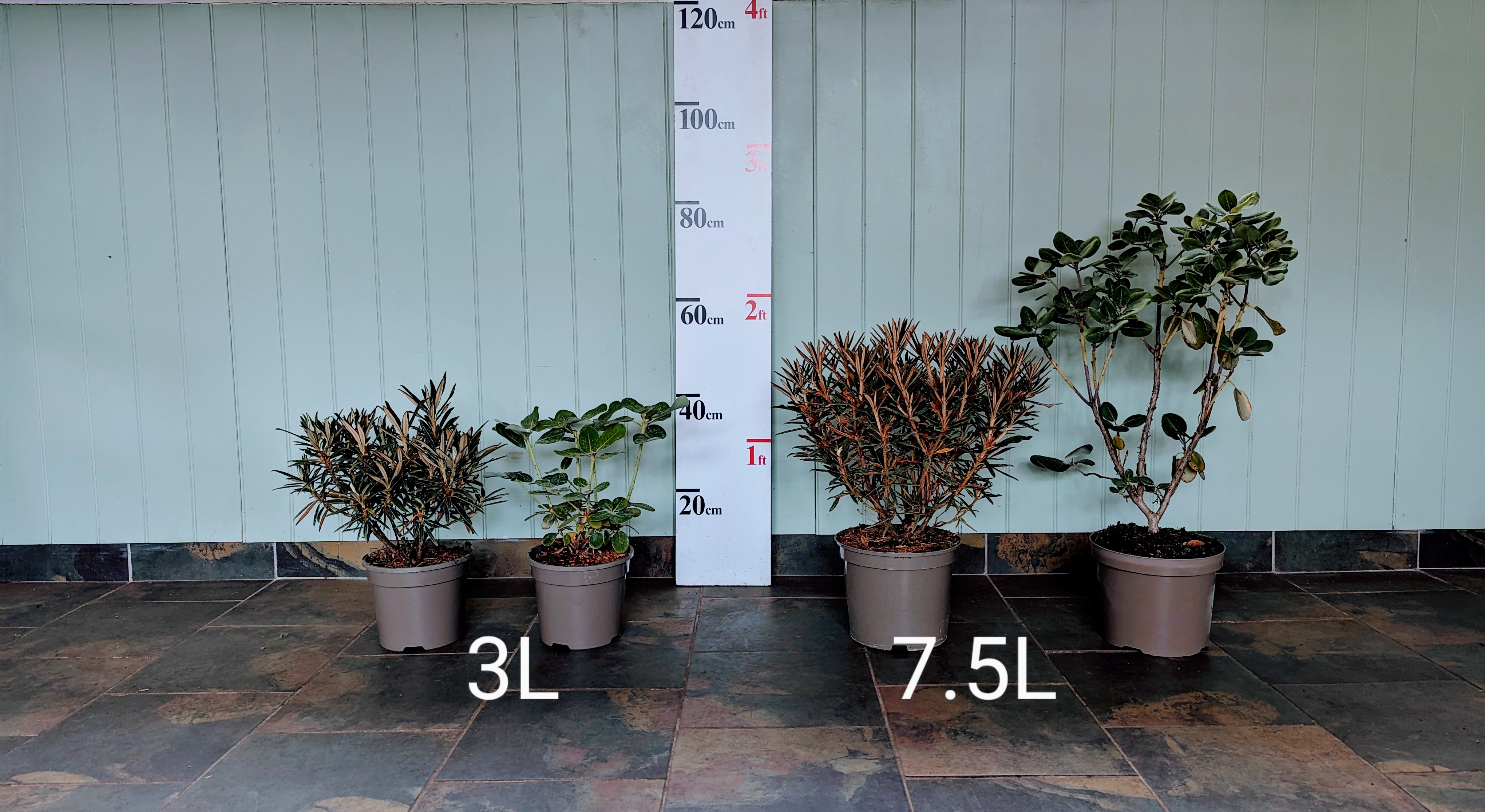Rhododendron anthosphaerum (Lidiping 3250m)
Item: SANTHOSP
 Currently Unavailable
Currently Unavailable
April
Purple & Blue
125-150cm
Not Scented
Yes
To -15 °C
Collect in Store
This item is available for collection.
Home Delivery
UK mainland delivery from £8.95
(IRRORATA H5) Purple flowers, deeper at the edges, and sometimes basal blotch near nectar pouches. April. Colour is variable, but usually 6-7 lobed corolla. Long pointed leaves. Height 125-150cm in 10 years.
Flowers tubular campanulate, 3-6cm long, in trusses of 8-15 flowers.
Leaves 6-18cm long, 1.5-5cm broad, matt olive green, underside paler.
Ultimately 1.5-9 metres highas shrub or tree.
Yunnan, NE Upper Burma, SE Tibet, at 2750-4000 metres
Epithet: With round flowers.
Good to know
Species
Species Rhododendrons often have wonderful foliage, but are fairly specialist and are best grown by more experienced gardeners.
These are the plants which were discovered by plant collectors, growing in the wild in the Himalayas and other mountain regions of the world. Being species they do not have the ‘hybrid vigour’ of named varieties, but they often do have great character and interest in flower and foliage. We pride ourselves in one of the best ranges of rhododendron species in the country, and we try to propagate these from recognised good forms. These may be identified by the original plant collector’s seed number, (eg R. denudatum EGM 294) or by a clonal name given to a selected plant (eg R. degronianum ‘Ho Emma’). Many rhododendron species rhododendrons are well worth growing for their foliage alone!
Rhododendrons like moist acidic soil, with good drainage, and plenty of organic matter such as leaf-mould and added ericaceous compost. Species should be given the best planting positions, which are neither too wet nor too dry. Yellow varieties need especially good drainage. For a guide to plant spacing, use the height we give in 10 years as a guide to the distance between each plant. Plant no deeper than the top of the rootball, and dig in plenty of good ericaceous compost around the sides. Most species require very little fertilizer and half a teaspoon of slow release feed is sufficient for a 3 litre plant, rising to a tablespoonful for a mature plant. Those in the taliensia and neriiflora subsections are particularly salt-sensitive, and should only be fed with a mulch. Most species in this section are not troubled by deer and rabbits.
Please note: It can take a number of years before some species start to flower, but often you can enjoy some lovely foliage while you are waiting. Flower colour of species can vary considerably from one clone to the next. For example, R. campanulatum can flower from white to pink or deep lilac, and there are selections of R. arboreum ranging from red through pink to white. We aim to supply the best clones possible. Typically, species are not recommended for growing in pots, as it is too difficult to provide the necessary care that they need.
Size Guide

The Basics
Ideal soil
Acidic soil, good organic content, pH 4.5-6.0. Inkarho range of rhododendrons will tolerate soils up to pH7.5
Sun or Shade
Light dappled shade is best for most varieties.
Shelter
Refer to hardiness rating. Give young plants protection.
Site Selection
Avoid close to trees, roots, invasive weeds, walls, hot patios, dry banks and waterlogged soils. Do not use weed matting or stone mulch.
Plant spacing
Use the height shown in 10 years as a guide to the distance between each plant. Allow room for plant to fill out. If planting closer for instant impact, be prepared to move plants after a few years.
Compost
- 3 litre pot, dig in 10-20 litres of ericaceous compost.
- 7.5 litre pot, dig in 20-30 litres of ericaceous compost.
- 70-80cm specimen, dig in 60 litres of ericaceous compost.
- 100-120cm specimen, dig in 120 litres of ericaceous compost.
Planting depth
Plant high in the ground, with the top of the rootball visible.
Feeding
Slow-release ericaceous feed recommended in March and straight after flowering.
Mulch
Recommended every few years.
Water
The key ingredient! Keep moist all season, especially the critical time at end of June for flower bud initiation. Tap water is better than no water. Heavy dose at least once per week in dry weather.
Drainage
Ensure good drainage in winter, especially with yellow flowering varieties. Avoid waterlogged sites.
Pruning
Rhododendrons and Camellias: Not normally required. Tidy wayward shoots after flowering.
Evergreen azaleas and Bloombux can be clipped into a low hedge.
Magnolias and Acers: Formative pruning when young to shape into a tree or bush.
Deadheading
Remove old flower-heads, particularly on young or weak plants.
For further advice see here
Delivery & Returns
Our website calculates the delivery charge according to weight and delivery location throughout the UK. To see these charges, please enter your postcode at the checkout, and you will see the charge vary as you add more items to your wheelbarrow.
 Millais Nurseries
Millais Nurseries



